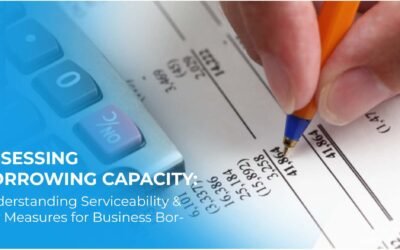A Guide to Ratios and Financial Analysis to Understanding Business Lending Security Types

Understanding Business Lending Security Types: A Guide to Ratios and Financial Analysis
When it comes to commercial lending, understanding the financial health and performance of a business is crucial for lenders. One important aspect of this assessment is the use of ratios. Ratios provide valuable insights into a business’s creditworthiness, risk profile, and financial stability. In this blog post, we will explore how ratios are used in commercial lending and the significance they hold in evaluating loan applications and loan monitoring.
Ratios and Creditworthiness Assessment
To determine a borrower’s ability to repay a loan, lenders analyze various ratios. We’ll delve into key ratios used in this assessment, such as the Debt Service Coverage Ratio (DSCR) and Current Ratio, which provide insights into the borrower’s financial strength and liquidity.
Evaluating Risk
Ratios also help lenders evaluate the risk associated with lending to a particular business. We’ll explore leverage ratios, such as Debt-to-Equity and Debt-to-Assets ratios, which provide insights into the borrower’s financial leverage and risk exposure.
Industry Benchmarking
Comparing a borrower’s financial performance against industry standards is essential. We’ll discuss how ratios serve as benchmarks for evaluating a business’s financial position and performance relative to industry norms and peers.
Trend Analysis
Examining ratios over multiple periods allows lenders to identify trends and patterns in a borrower’s financial performance. This analysis helps assess historical stability, growth prospects, and the ability to withstand economic fluctuations.
Loan Structuring
Ratios play a role in determining appropriate loan structures. We’ll explore how ratios such as Loan-to-Value Ratio (LTV) help determine the maximum loan amount based on the collateral provided by the borrower.
Loan Monitoring
Ratios are used in ongoing loan monitoring to track a borrower’s financial performance and ensure compliance with loan covenants. We’ll discuss how regular analysis of ratios helps lenders identify early warning signs of financial distress and take necessary actions.
Understanding Income Statement Ratios
We’ll dive into key income statement ratios and formulas used to assess profitability and efficiency, including Gross Margin, Net Margin, and Key Expense Margin.
Exploring Balance Sheet Ratios
We’ll explore important balance sheet ratios such as Current Ratio and Gearing Ratio, which provide insights into solvency and financial risk.
Insights from Working Capital Cycle Ratios
Working capital cycle ratios, such as Stock Turns, Stock Days, A/Rec Turns, and A/Rec Days, help evaluate inventory management, accounts receivable turnover, and cash flow efficiency.
Overall Efficiency Ratios
Efficiency ratios, including Creditor Turns, Creditor Days, Assets to Sales, and Return to Owners, shed light on creditor management, asset utilization, and the return on net worth.

Conclusion
Understanding ratios is essential for brokers and lenders involved in commercial lending. Ratios provide valuable insights into a business’s financial health, creditworthiness, and risk profile. By evaluating ratios, lenders can make informed decisions regarding loan approvals, terms, and conditions. If you’d like to discuss your business’s ratios and explore opportunities, book a meeting with our team at Key Choice Lending.
Remember, ratios are just one component of a comprehensive lending decision. Lenders also consider other factors, such as industry trends, market conditions, and qualitative assessments. By leveraging the power of ratios, lenders can make well-informed lending decisions, contributing to the success of businesses and the overall economy.
Book a meeting with us today by visiting our website. Our team will work closely with you to assess your financial position, understand your industry experience, and help you secure the financing necessary to fuel your business growth.
Disclaimer: The information provided in this blog is for educational purposes only and should not be considered financial advice. Always consult with a professional financial advisor or lender for specific lending decisions.





